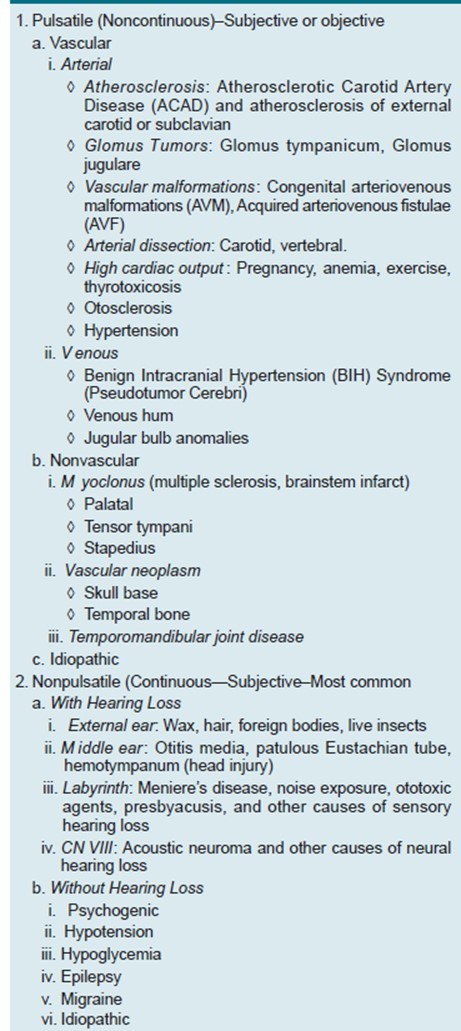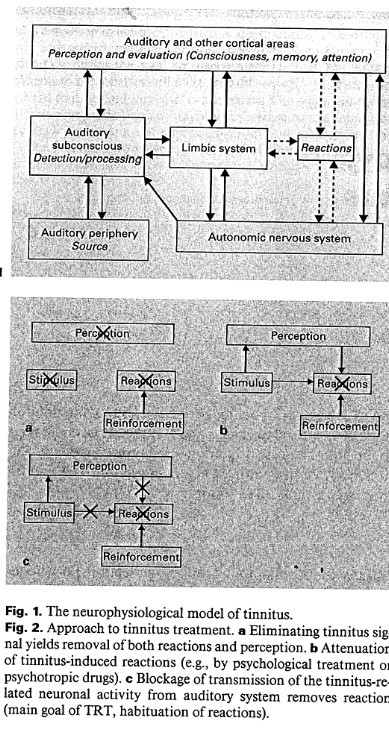Ringing in the Ears: Exploring the Causes and Treatments of Tinnitus
M3 India Newsdesk Jun 29, 2023
Tinnitus stands for the perception of sound (ringing or noise), which has no external stimulus. This article explores the origins of tinnitus, and its treatment options, including various therapies, diagnostic methods, and the involvement of several medical specialities.
Key takeaways
- Approximately 33% of people experience tinnitus sometime in their lives.
- The cause of this common ear symptom isn’t quite understood—the severity of sound ranges from nearly undetectable to severe and debilitating.
- Though there is no cure for chronic tinnitus, there are various modalities of management, which significantly enhances the quality of patients’ life. (2)
- The defining feature of tinnitus is the origin of this sound within the patient. Usually, it is unilateral but may also affect both ears.
- It may vary in pitch and loudness and has been variously described by the patient as roaring, hissing, swishing, rustling or clicking type of noise.
- Tinnitus is more annoying in quiet surroundings, particularly at night, when the masking effect of ambient noise from the environment is lost: also the mind is less distracted at night leading to undue focus on the constant ringing sensation. (3)
- It has to be separately diagnosed and differentiated from auditory hallucination: It is a psychiatric disorder in which the patient hears voices or other organised sounds like music or conversation. (2)
Causes and types of tinnitus
Subjective tinnitus
Subjective tinnitus has its origin in the external ear, middle ear, inner ear, VIIIth nerve or the central nervous system. Systemic diseases like anaemia, arteriosclerosis, hypertension and certain drugs may behave through the inner ear or central auditory pathways. In the presence of conductive hearing loss, the patient may hear abnormal noises in the head during eating, speaking or even respiration.
Objective tinnitus
Objective tinnitus is seen less frequently. Vascular lesions, e.g. glomus tumour or carotid artery aneurysm cause swishing tinnitus synchronous with pulse. It can be temporarily abolished by pressure on the common carotid artery. Venous hum can sometimes be stopped by pressure on the neck veins.
- Tinnitus synchronous with respiration may occur due to an abnormally patent eustachian tube.
- Palatal myoclonus produces a clicking sound due to clonic contraction of the muscles of the soft palate and can be easily diagnosed.
- Clonic contraction of muscles of the middle ear (stapedius and tensor tympani) may cause tinnitus which is often difficult to diagnose.
- Sometimes, tinnitus is psychogenic and no cause can be found in the ear or central nervous system. (3)

Management of tinnitus
Diagnosis:
- Firstly a patient with tinnitus may undergo a basic clinical assessment.
- This will include the relevant otological, general and family history, and an examination focusing on the ears, teeth and neck and scalp musculature.
- Referral to a specialist is likely to involve a variety of other investigations including audiological tests and radiology.
- Persistent, unilateral tinnitus may be due to a specific disorder of the auditory pathway and imaging of the cerebellopontine angle is essential to exclude, for example, a vestibular schwannoma (acoustic neuroma) - a rare benign tumour of the cochleovestibular nerve.
- Other lesions, such as glomus tumours, meningiomas, adenomas, vascular lesions or neuro-vascular conflicts may also be detected by imaging. (1)
Tinnitus is a symptom and not a disease.
Where possible, its cause should be discovered and treated. Sometimes, even the treatment of the cause may not alleviate tinnitus.
Management:
When no cause is found, the management of tinnitus includes:
- Reassurance and psychotherapy- Many times the patient has to learn to live with tinnitus.
- Techniques of relaxation and biofeedback.
- Sedation and tranquillizers- They may be needed in the initial stages till the patient has adjusted to the symptom.
- Masking of tinnitus- Tinnitus is more annoying at bedtime when the surroundings are quiet. The use of a fan, loudly clicking clock or a similar device may mask the tinnitus and help the patient to go to sleep. The use of a hearing aid, in persons with hearing loss, not only improves hearing but also provides a masking effect.
Tinnitus maskers can be used in patients who have no hearing loss. They are worn like a hearing aid. Use of a tinnitus masker for a short time may provide, in some individuals, a symptom-free period for several hours due to the phenomenon of residual inhibition.
Tinnitus instrument
It is a combination of a hearing aid and a masker in one device. Looks like a hearing aid. Both hearing aid and masking device have independent volume controls. (3)
Tinnitus Retraining Therapy (TRT)
Jastreboff from the University of Maryland described a neurophysiological model for a generation of tinnitus and the basis for habituation therapy. It presumes that tinnitus does not cause as much annoyance as the emotional reactions generated by the limbic and autonomic systems.
His therapeutic model aims to attenuate connections between auditory, limbic and autonomic nervous systems and thus create tinnitus habituation. It occurs at two levels.
1. Habituation of reaction. It is the uncoupling of the brain and body from negative reactions to tinnitus.
2. Habituation of tinnitus. It is blocking the tinnitus-related neuronal activity to reach the level of consciousness.
With this therapy patients suffering from tinnitus lose awareness of tinnitus and also do not get annoyed even when they do have tinnitus.
Therapy consists of two major components:
- Counselling
- Sound therapy
Counselling:
- It is important to educate the patient about tinnitus, its mechanism of generations, perception of tinnitus at subcortical and cortical levels and the plasticity of the brain which can habituate any sensory stimuli.
- The limbic system (emotions) and autonomic system (body reactions) are the primary sources of negative reactions to tinnitus, i.e. sleep disturbance, inability to concentrate, annoyance, anxiety and depression and not the tinnitus per se.
Sound therapy:
- The patient is exposed to environmental sounds, music radio, television, or the use of hearing aids (in case he suffers from hearing loss).
- In general, he should avoid a silent environment.
- To produce external sound for habituation, sound generators are used which produce continuous low-level, broad-band noise for at least 8 hours a day.
- Sound is used not for masking the tinnitus but is adjusted to remain at a low level, for habituation. TRT needs a long period of 18–24 months but gives a significant improvement in more than 80% of patients. (3)

Disclaimer- The views and opinions expressed in this article are those of the author and do not necessarily reflect the official policy or position of M3 India.
About the author of this article: Dr Tosha Shah MS is a Senior Consultant practitioner at Dhiraj Hospital, Vadodara.
-
Exclusive Write-ups & Webinars by KOLs
-
Daily Quiz by specialty
-
Paid Market Research Surveys
-
Case discussions, News & Journals' summaries